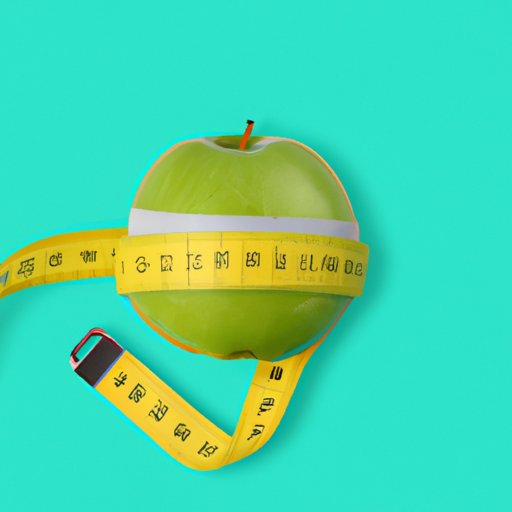
Introduction
One of the biggest challenges for many people on their weight management journey is understanding how many calories they need to consume daily to maintain their weight. Knowing your daily caloric needs is crucial for achieving your health goals, whether you’re looking to lose weight, gain muscle or maintain a healthy weight. In this article, we’ll explore the basics of calories, how to calculate your daily caloric needs for weight maintenance, tips for consistency, healthy food choices and breaking down common barriers that make it difficult to stick to a caloric limit.
Understanding the Basics: What Are Calories and How Many Do You Need to Maintain Your Weight?
Calories are a measure of energy; they are a unit used to quantify the amount of energy we consume through food and the amount of energy we burn through physical activity and natural bodily processes. Consuming more calories than we need leads to weight gain, while consuming fewer calories than we need results in weight loss.
The precise number of calories an individual needs daily differs based on age, gender, height, weight, and physical activity level. Younger people generally need more calories than older people. Men require more calories than women. Tall people require more calories than shorter people. Active people require more calories than those who are sedentary.

Finding Your Magic Number: Calculating Your Daily Caloric Needs for Weight Maintenance
There are a few ways of calculating your daily caloric needs for weight maintenance, and the easiest way is by using an online calculator. Alternatively, you can use a formula to determine your total daily energy expenditure (TDEE).
The TDEE formula includes the Basal Metabolic Rate (BMR), which is the number of calories required by your body just to exist. This takes into account your age, gender, height, and weight. Then, you multiply the BMR by a factor to account for your level of physical activity.
For example, if you have a sedentary job, you would multiply your BMR by 1.2. But if you are very active and exercise for an hour every day, you would multiply it by 1.55. You can also use a food diary to help track your actual calories consumed each day.
Based on the TDEE formula and the level of activity, a 30-year-old woman being 5’5″ tall and weighing 130 pounds with a sedentary job requires about 1,700 calories to maintain her weight, while a 30-year-old man at 6′ height, weighing 190 pounds, and who exercises daily would require around 3,500 calories to maintain his weight.
Keep Those Pounds at Bay: The Importance of Consistency in Caloric Intake
Consistency in your caloric intake is paramount for successful weight management. Consuming too many calories, even if unintentional, over prolonged periods can lead to weight gain. On the other hand, consuming too few calories can slow down your metabolism, send your body into ‘starvation mode’ and lead to muscle mass loss.
To maintain consistency in your caloric intake, it’s always a good idea to plan your meals and snacks in advance and track your food intake. This helps you avoid binge eating or giving in to cravings. Staying hydrated is also essential to curb your hunger and avoid overeating.
Foods that Pack a Punch: Learning to Make the Most of Your Daily Caloric Allowance
Eating healthy and nutritious foods can go a long way in managing your caloric goals. Foods like fruits, vegetables, lean protein sources, and whole grains provide a lot of nutrition, fiber, and protein but fewer calories. This helps keep you full for longer and ward off cravings for unhealthy snacks and fast foods.
Some of the healthiest meals and snacks include fresh fruits, raw veggies, whole grain bread, and lean protein sources like grilled chicken and fish. Smoothies made from fresh fruits and veggies or protein shakes can also make for a healthy breakfast or snack. The more colorful your plate, the better it is for you.
Breaking Down Barriers: Tips and Tricks for Staying Motivated in Your Caloric Goals
There are several common barriers that can make it difficult to stick to your caloric goals, such as stress, social situations, and food cravings. One way to overcome these barriers is by finding alternative coping mechanisms such as art, music, or exercise. Communicating your goals to your friends and family can also help them understand and support your health journey.
Occasionally indulging in treats is also OK as long as it doesn’t derail your progress. Practicing mindful eating and slowing down to savor your food can help you enjoy your meals while staying within your caloric limit.
When Enough is Enough: Understanding the Risks of Caloric Restriction for Weight Management
While adopting a diet and exercising regularly is essential for weight loss, overly restrictive diets can do more harm than good. Caloric restriction should only be practiced under medical supervision to avoid nutrient deficiencies and other health complications.
Instead of focusing on extreme diets, the key to successful weight management is making gradual and sustainable changes to your lifestyle, such as eating healthier, exercising consistently, and getting enough sleep. Building these habits will help you achieve your health goals more effectively.
Take Control of Your Health: Using Caloric Tracking Apps and Tools to Help You Stay on Track
Caloric tracking apps like MyFitnessPal, Lose It!, Fitbit and many more are great tools for monitoring your food intake, tracking your progress, setting realistic goals, and adjusting your daily caloric intake, depending on your activity levels. You can track everything from your water intake to your macros with these apps, which are available on both iOS and Android devices.
Conclusion
Now that you understand the basics of calories and how to calculate your daily caloric needs, you’re equipped to make informed choices about your food intake and stay on track to your health goals. Remember to stay consistent, choose healthier foods, overcome common barriers and seek support when needed.
It’s not always easy to get to where you want to be, but by taking control of your health, you can create a happier, healthier, and more fulfilled life.





